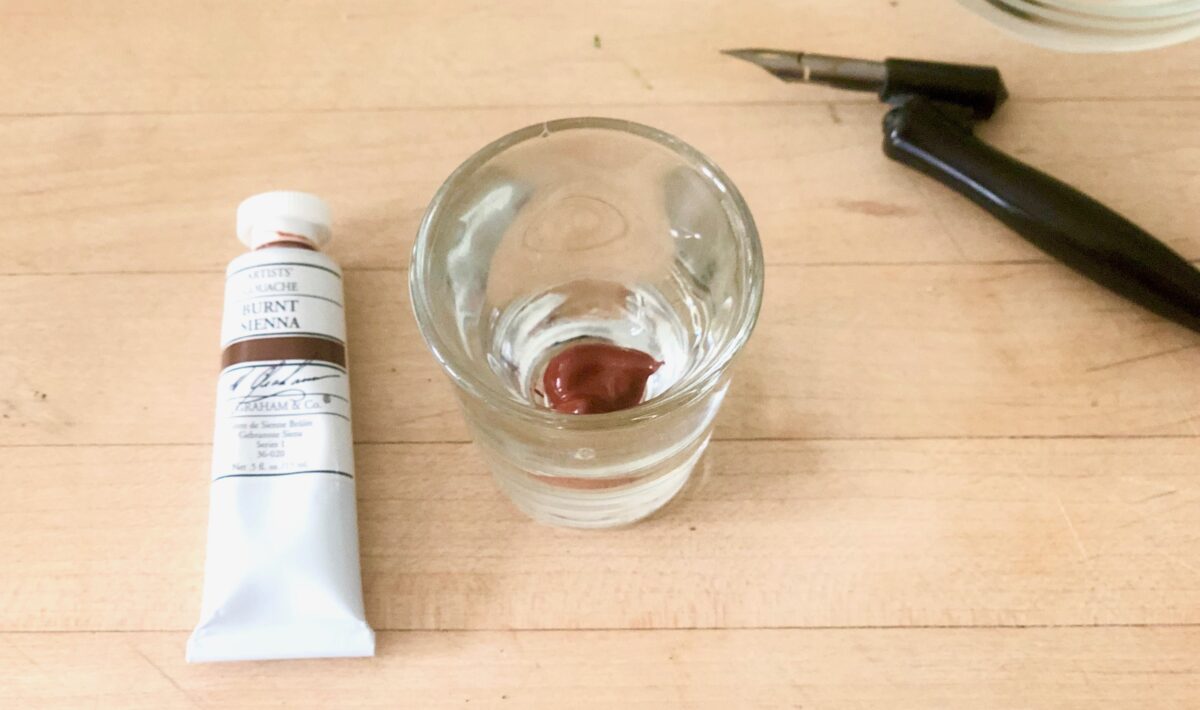Welcome to The Calligraphy Supply’s intro on using gouache for calligraphy! Please be aware that we may receive a commission from purchases made through links on this site.
In 2017 when my best friend asked if I could hand letter envelopes (inner and outer) for her wedding, I was initially intimidated by her discerning eye. She encouraged me by sharing many Instagram posts every day. And I do mean every day. Read the whole story here.
So what does this have to do with gouache?
What is gouache?
In our research, we found that quite a few of the professionals we followed had raved about the versatility and bold, matte finish of gouache for calligraphy. Gouache is an opaque, heavily pigmented watercolour paint that can be used for many art forms including painting, illustration, blocking, and of course, calligraphy. It’s typically made with pigments, a binding agent such as gum arabic, and water (Wikipedia).
Preparing gouache for calligraphy
Often packaged in a metal or plastic tube, the product is thick and creamy, not unlike toothpaste. Gouache needs to be diluted with water to get the correct flow for dip pen calligraphy.
To prepare gouache for calligraphy, add a few drops of clean water at a time, and stir with a clean paintbrush. The ideal texture should be similar to heavy cream.
You can test it out with your pen and see if the gouache begins to flow. If not, add a few more drops of water. Keep in mind that it’s easier to add more water to increase flow than it is to add gouache to decrease flow.
Mixing gouache
One of the benefits of using gouache for calligraphy projects is that it’s super easy to mix different pigments together to create custom colours. Because of this, buying a set is more economical than buying individual tubes. Having a variety of colours on-hand makes it easy to create the perfect colour and shade for your projects.
Sets like this 10-tube Introductory by Winsor & Newton include all the pigments necessary for the split primary colour mixing theory.
Storing gouache
Another great benefit of gouache is that it’s simple to store and can be re-moistened to use again later.
Full confession: I use clear shot glasses that I probably got from my parents when I was in college as a holder and for storage. This Anchor Hocking set is very similar to what I have if you’re willing to accept an unconventional ink vessel.
More traditional paint trays like this one by Transon is a great for both mixing and storage.
Traditional vs. acrylic gouache for calligraphy
Traditional gouache is made from a pigment, binder like gum arabic, and water. Because it’s a watercolour, this also means it is not water resistant. Acrylic gouache on the other hand is created by binding pigments with acrylic polymer emulsion. While wet, they are water soluble, but are water resistant once dry (Wikipedia).
There are definite benefits of both for calligraphy. When choosing what’s right for your project, consider the elements the final product will be exposed to and how important the finish is to you.
In my review of Liquitex Acrylic Gouache, I compare traditional acrylic gouaches side-by-side, and mixed together.
Good luck and gouache on!


